October 15, 2020
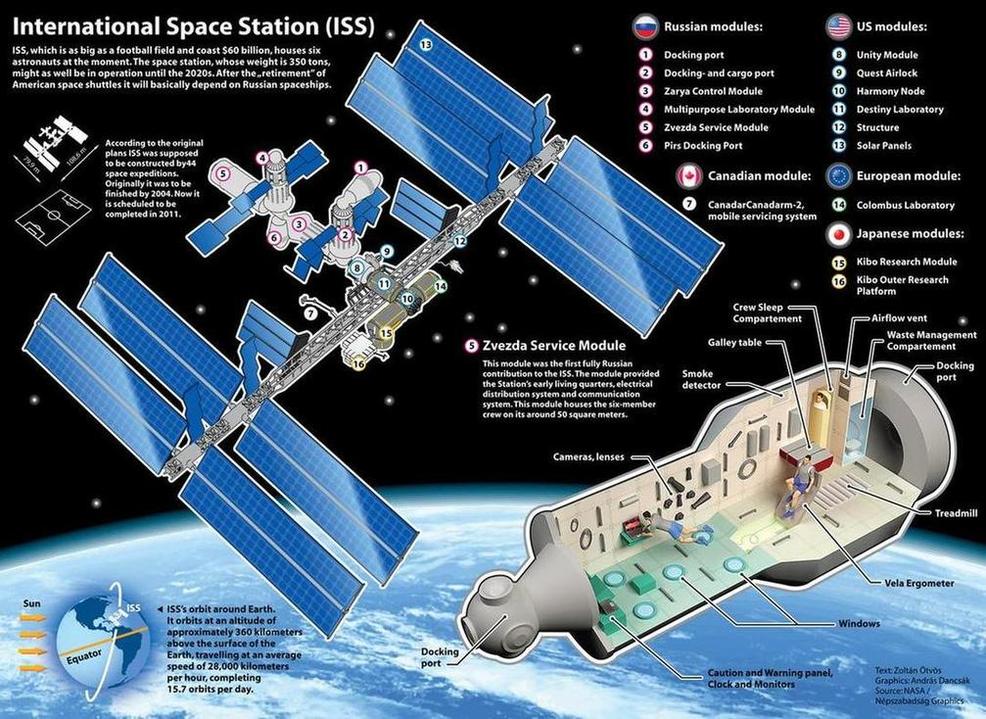
Posted by: The Brickmuppet at
09:31 PM
| No Comments
| Add Comment
Post contains 69 words, total size 1 kb.
May 30, 2020

Posted by: The Brickmuppet at
04:25 PM
| Comments (3)
| Add Comment
Post contains 47 words, total size 1 kb.
March 01, 2020

Posted by: The Brickmuppet at
08:17 PM
| No Comments
| Add Comment
Post contains 69 words, total size 1 kb.
February 08, 2020

Some time ago an interstellar object, subsequently named Omuamua passed through the solar system. On it's way out of The Solar System, it performed what appeared to be a course correction and accelerated out of the solar system. This caused considerable consternation at the time, but subsequent analysis seems to indicate that it was sufficiently flat and non-dense that light pressure combined with the likely sublimation of volatiles on its sun-facing side is sufficient to explain its apparently aberrantly expressed celerity.
That being said, the object is weird and John Michael Godier interviews Dr. Sergey Mashchenko who goes over all the weirdness about this object, known, and unknown as well as some of the speculation that has been put forward to explain the weirdness...the most speculative speculation is that the thing might have been made out of dark matter.
Of course such extraordinary claims require extraordinary proof, and the proof has been accelerating out of the solar system 2 years. It's only a little more likely than the notion that Epstein killed himself.
Which circuitously brings us to another bit of unfounded speculation, regarding The Epstein Drive from THE EXPANSE That plot device is what is called a "torch drive" which is a staple of science fiction without FTL. While considered by the authors to be handwavium, Matter Beam over at the Tough Sci-Fi blog has run the numbers and applied the latest theories of fusion rocket designs to the performance figures noted in the series of books and come to the conclusion that the Epstein Drive, is in fact much harder sci-fi than is generally supposed. It's a very long post, go read the whole thing.
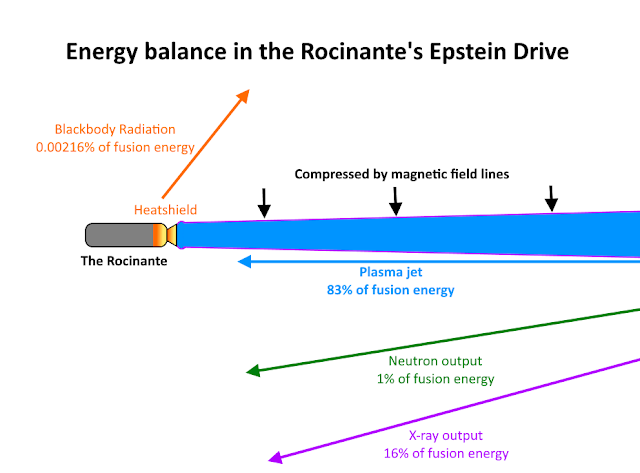
While performance of a Torch drive seems to be within the realm of possibility, it is not a near term prospect. By contrast NASA has been sponsoring research by Princeton Satellite Systems which has produced a design for a direct fusion drive that has astounding performance by current standards.
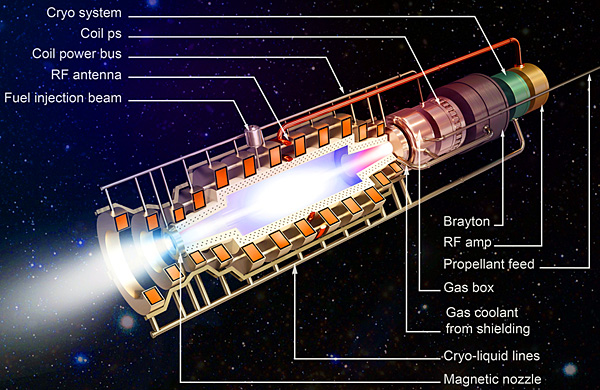
; text-decoration-style: initial; text-decoration-color: initial; display: inline !important; float: none;">Regardless of the low thrust, it can deliver a metric ton of payload to Pluto in 3.75 years flat, instead of chemical rocket New Horizon's pathetic 30 kilograms taking freaking nine years.
Its main development hurdles are the magnetic nozzle, which is still a work in progress with regards to the performance needed for fusing of He3 and its reliance upon that very helium 3 which is quite expensive here on Earth. It can be generated, however by making tritium which decays into He3 and there are, of course the questionable proposals to mine it on the moon.
It may seem to be putting the cart before the horse since we can't get fusion power plants to break even on power, however the power plant has to contain the fusion reaction, whereas a rocket is just has to have it blow out the rear end, and we've had fusion explosions since we evaporated a coral atoll in 1952. In fact the rocket design evolved from the constant containment failures in fusion power plant experiments. It basically involves having the inevitable failure happen in one direction....calling that direction aft and building the ship around that premise. Besides the good overview at Atomic Rocket, numerous peer reviewed papers have been done on this engine and its applications over the last few years including a NASA sponsored design for a Pluto probe and a BIS proposal to use the design for missions to the Oort cloud, the gravitational lensing point and the nearest stars.
Its certainly not off the shelf, but if pursued, it promises remarkable improvements in performance in the fairly near term.
Anyway. the future is looking bright.
So don't eat bats.
Posted by: The Brickmuppet at
02:05 PM
| Comments (3)
| Add Comment
Post contains 685 words, total size 7 kb.
February 07, 2020

The FCC permit has already been applied for.
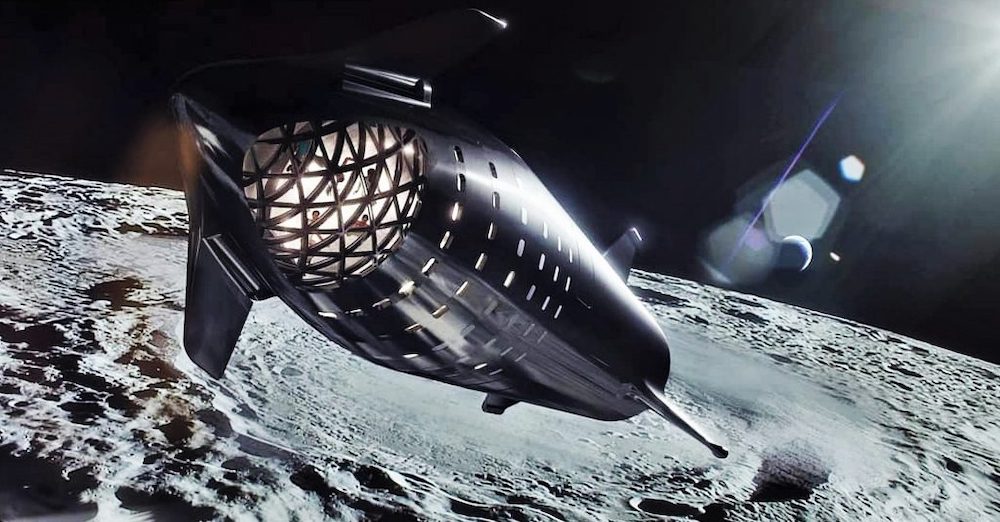
While there's very little on the moon worth mining and bringing to earth it's dirt is practically MADE of Iron, Oxygen, and Aluminum and there are extensive deposits of Chromium. Musk has gone to great lengths to remove exotic materials from his toolkit to facilitate field repairs and his structural components tend to be made of stainless steel and aluminum. The moon has everything but nickle and carbon for stainless steel which can be as little as 0.8% carbon by weight. In the highly unlikely event no carbonaceous chondrites have impacted on the moon, or has been baked out carbon can be provided by the carbonaceous not-quite-moons like Cruithne, and Yorp, which could also provide nitrogen and phosphorus. Nickle almost certainly exists in viable ammounts in the larger craters, which were, of course, created by meteors. While, it's unknown if there are spectacular glaciers on the moon like there are on Mercury, there is known to be a good deal of water at the poles.
The moon has a vast uninhabited area, and NO ECOSYSTEM, so one could, as an extreme example, use unshielded nuclear reactors on the surface for smelting stuff, so it's a perfect industrial park for expanding space projects.
Some people seem confident enough that they're already measuring the drapes.
Brian Wang over at NBF notes that Musk is looking to run out these rocket's life cycle on launches to the cis-lunar destinations and then gathere those near the end of their lives for the Martian Launch Window every two years. These large convoys would have the advantage of proximity to one another in the event of any mishap. Obviously one would not send that many people to Mars until the local infrastructure such as habitats (and, if necessary gravitrons) have been developed to accept several thousand people.
Given the numbers Musk is talking about, a typical convoy might have 50-100 ships, most on a one way trip so, 5-10,000 people every two years after about a decade of building habitats. This would immediately push Martian population into a biologically sustainable levels, especially if the population were of varied races and ethnicities. After a decade the population might be 50,000 without factoring births, which is way more than Liechtenstein, and almost as much as the Cayman Islands.
We here at Brickmuppet Blog are more in the Dandridge Cole, Gerard O'Neal camp, favoring large space habitats over outposts on planets or moons, but the advantages of having a large (planet's worth) of resources handy is probably a good advantage at the start of this endeavor. There's a lot to do there as well and the first step is the moon.

Posted by: The Brickmuppet at
10:46 AM
| Comments (2)
| Add Comment
Post contains 608 words, total size 6 kb.
January 19, 2020

Posted by: The Brickmuppet at
01:25 PM
| No Comments
| Add Comment
Post contains 40 words, total size 1 kb.
November 04, 2019

I find absolutely glorious that DARPA actually did this study and even better that they came up with something that would work. In 1983 they weren't sure which weapon would be better, so the design has a laser, a particle beam and a railgun each powered by its own nuclear reactor which doubles as an engine. The main focus of the exercise seems to have been figuring how to provide short but massive bursts of electricity for energy weapons from nuclear reactors that could be operated around people. However ,there was attention given to the ship as a whole, including, heat dissipation, radiation protection for the crew and the vessel has artificial gravity for extended operations. There is an extensive analysis at the above link, go read it in full.
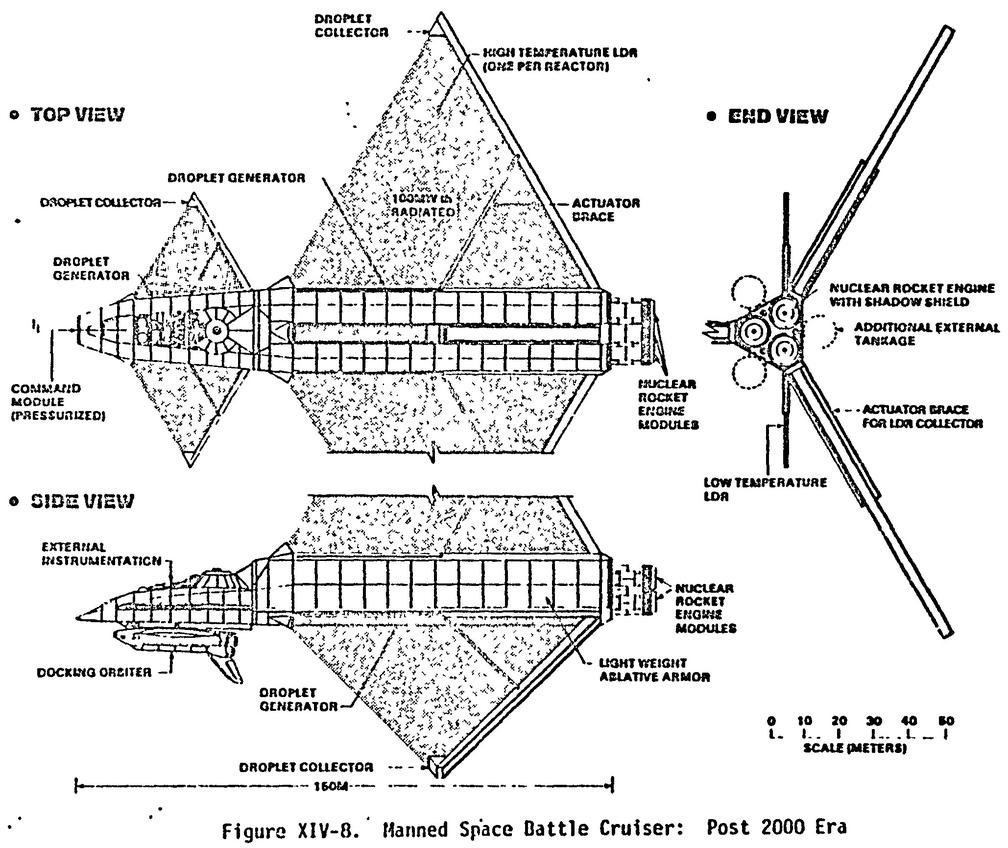
A PDF of a very crappy mimeographed copy of the report is here.
Posted by: The Brickmuppet at
09:20 PM
| Comments (6)
| Add Comment
Post contains 232 words, total size 2 kb.
October 21, 2019
There are a lot of interesting and impressive items in this presentation, some of which impress on a more visceral level than a technical one.

Interestingly, while it has previously been sort of hinted at, Wooster here specifically states that the first manned rockets will be one way affairs.
Wooster also said the first spaceships will likely serve as homes for astronauts. This may not be the most comfortable setup, but it could reduce mission complexity and development by skipping the need to immediately build Mars habitats.
While the later vehicles are slated to make round trips and return, this confirmation presents in a fairly stark fashion that Musk and company are serious about a permanent human presence.
While that's fraught to be sure, few truly great things are done without risk.
The 21st century seems to finally be arriving.
Posted by: The Brickmuppet at
05:37 PM
| Comments (1)
| Add Comment
Post contains 185 words, total size 2 kb.
October 06, 2019
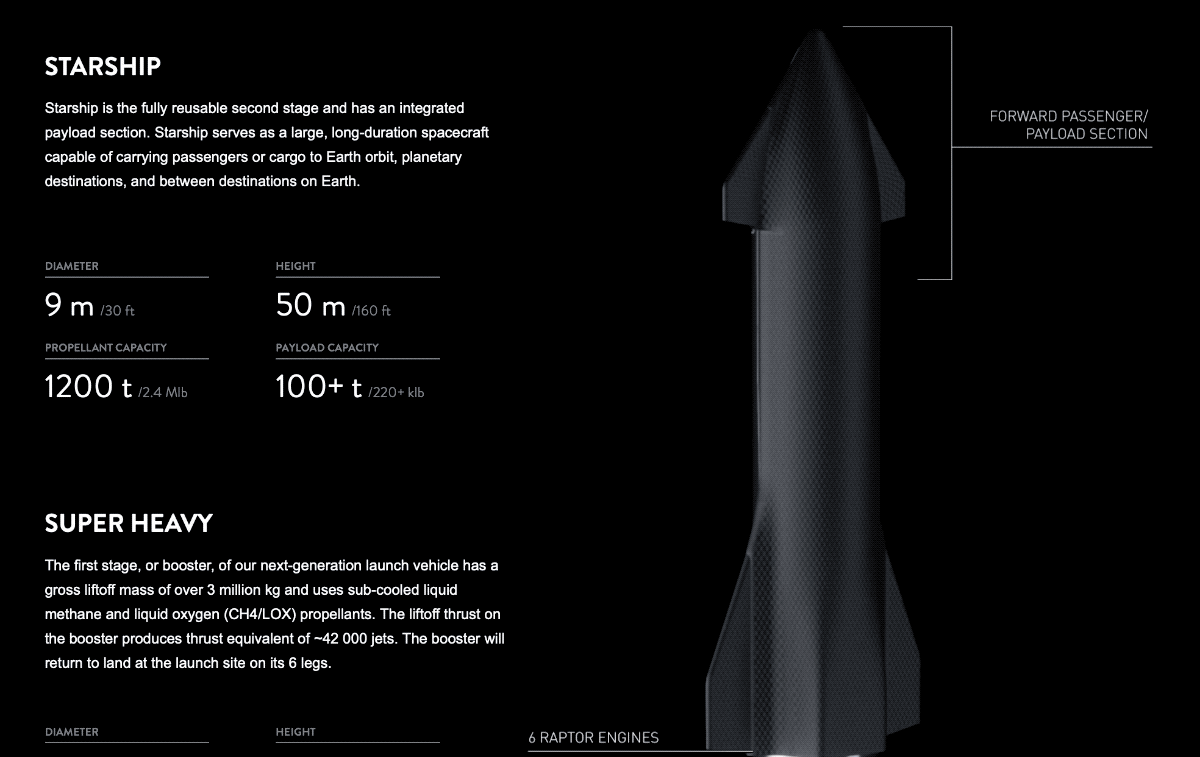
Musk is saying that once this thing makes it to twenty kilometers up and safely back down, then the following launch will be to orbit.
Crewed flights will follow in short order.
Space-X has massively updated their Starship page. See here.
Musk's decision to use simpler field serviceable materials, mainly stainless steel in the construction of his new rockets means that the main production bottleneck is the big Raptor engines. The production capacity of those engines and their practical number of resuses for each will determine the pace of the construction program. Naturally, increasing raptor production is getting a lot of attention.
While there are very complex pieces of kit going into these ships (like life support systems in the manned ones) they are, on balance not terribly complex compared than contemporary aircraft or ships.
This has some interesting implications for mass production given that Musk is doing this as a crash program. because constructing a 300-400 ton stainless steel spacecraft stack, is probably not much more of an investment in relative terms than a 1200 ton destroyer was in WW1, (273 ships in ~2 years). While those numbers are far beyond the ken of a single midsized company with two production facilities, they do indicate that if production methods are nailed down, in a few years a score or more of these things might be produced.

The stainless steel construction is even more interesting in the context of in-situ repairs on Mars. Steel is easily workable and while stainless steel is less so its far more so than titanium or composites and can be repaired in the field.
Morever, while Space-X's plans to produce fuel on mars are well known it should be noted that Martian soil is mostly iron oxide and the martian atmosphere is 1/3 carbon, so steel is readily available given some modest infrastructure. While stainless steel and steel are hard to weld together, it is not impossible to do so, and it's conceivable that a damaged ship on Mars might be repaired sufficiently to get into Earth orbit.
In the much longer term with enhanced infrastructure, it gets better. You see, the materials for making stainless steels are varying proportions of iron ore, chromium, silicon, nickel, carbon, nitrogen, and manganese. If one takes a deep dive into the biologically obnoxious Martian Regolith, one finds the following proportions:
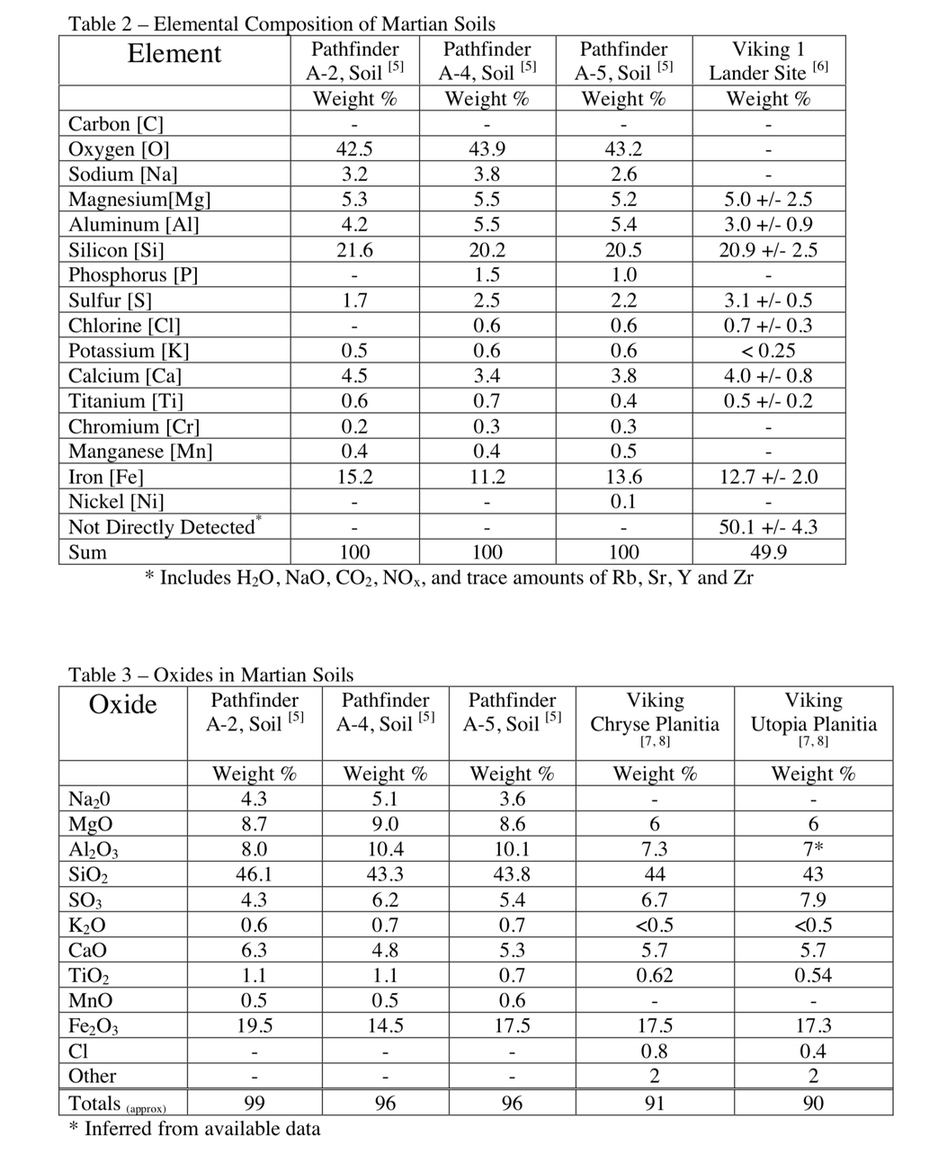
Note the presence, albeit sometimes in minute concentrations of everything except nitrogen which is mainly used as a substitute for nickel, which is found in minute quantities only at the pathfinder landing site. Fortunately, floating above the dirt is the martian atmosphere which is 2.7% Nitrogen. These are minute quantities to be sure and probably not practical for extraction at an early base, but this is only the surface dirt and their presence there indicates that there is more to be found.
If Space-X doesn't faceplant, which is not beyond the realm of posibility, then there is the very real potential for the next decade to see scores, if not hundreds of these ships built to carry people, quite possibly settlers, to Mars, the Moon and the asteroids.
Posted by: The Brickmuppet at
03:06 PM
| Comments (5)
| Add Comment
Post contains 560 words, total size 5 kb.
August 27, 2019

Posted by: The Brickmuppet at
06:54 PM
| Comments (2)
| Add Comment
Post contains 8 words, total size 1 kb.
August 21, 2019
Specifically, they are using positrons (anti-electrons) to catalyze a small fusion reaction. Positrons can be generated on the spot using a radioactive isotope of krypton, thus solving the antimatter storage problem, and being positively charged can be directed with a fair bit of ease solving the handling antimatter problem.
Now one of the Brickmuppet's Crack Team of Science Babes points us to a follow up to this story she found by months of diligent research...

Basically the conclusion is that it works, though the version that is looked at in the N.A.S.A report has much lower thrust than one would expect from something with the words "Fusion" and "Anti-Matter". Indeed, its thrust compares unfavorably to most ion drives.
However, it has the astonishing exhaust velocity of 2,943,000 meters per second and a Delta V (the change in velocity over the time an engine burns) of 60,000 meters per second. Now it burns a looong time and accelerates imperceptibly, but its DeltaV is actually better than some of the smaller Orion drive designs which involved using exploding atom bombs as propellant.
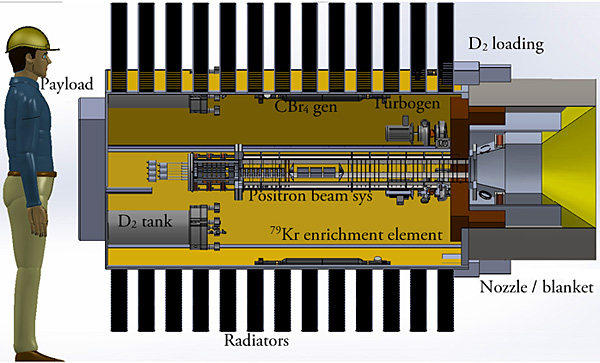
That's all the the Deuterium propellant needed for a 60,000 meter change of velocity. Yes the thrust is minuscule but over time it adds up. This is for a notional asteroid mission using the design as it is now.
The speed of New Horizons and the Voyager probes, the fastest things ever sent out by mankind is less than 17,000 meters per second.
Winchell Chung puts it thusly:
With many other propulsion systems, rocket designers are happy if the spacecraft is only 75% propellant and 25% everything else. A spacecraft with Radioisotope Positron Propulsion is pretty much 100% rocket and payload, the propellant is only a few micrograms. Granted that a one metric ton space probe with such an engine will have an measly acceleration of 0.0001 meters per second (0.0125 snail-power), but you can't have everything.
Be that as it may, the report compares their positron engine with an electric propulsion engine for a hypothetical capture/redirect of asteroid 2009BD and the positron engine kicks the electric engine to the curb.
Theoretically you can use multiple engine arrays if you must have a higher thrust.
Or perhaps you could use a different engine (say a regular chemical engine) for emergencies. As an aside, the engineers seem to anticipate higher thrusts in the future but that is not mentioned in the peer-reviewed paper and must be considered to be speculation at this point.
There's a good deal of work still to do as noted at the end of the report, but it does now appear that this proposal to field an anti-matter propulsion system in the next few years is indeed practical.
Posted by: The Brickmuppet at
05:35 PM
| Comments (1)
| Add Comment
Post contains 549 words, total size 5 kb.
July 20, 2019
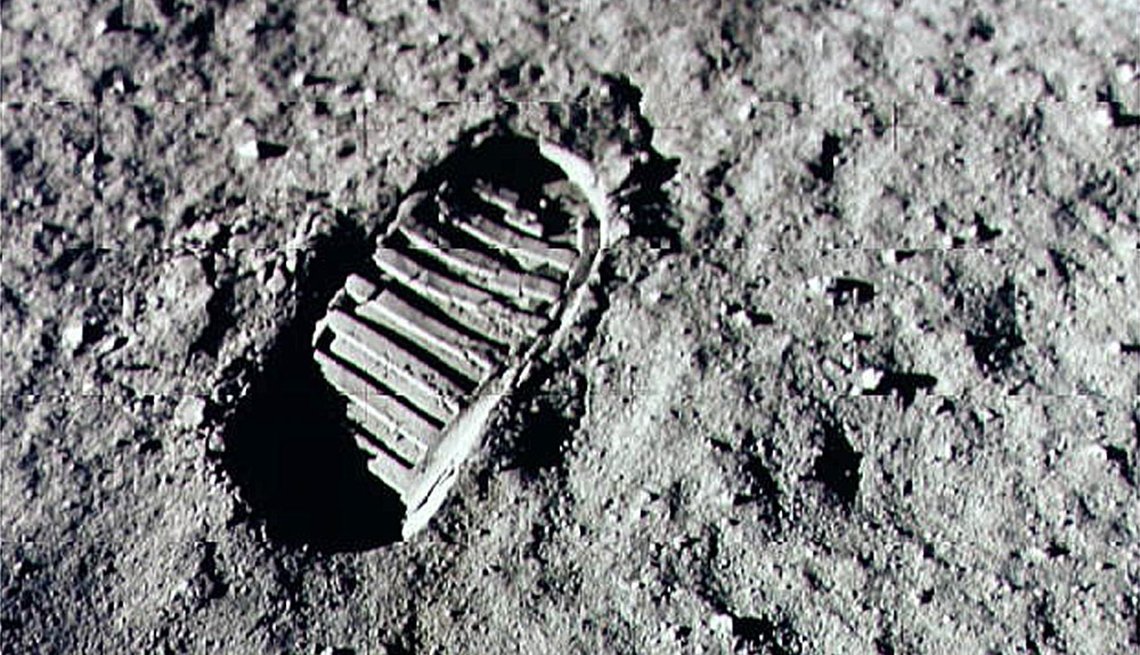
It's been 50 years since Neil Armstrong became the first person from this planet to set foot on the moon. A mere 7 years prior, an American president set this most epic of endeavors as a national goal, in the same year the first American Orbited the Earth. it should be noted that U.S. rockets were not particularly reliable at the time...
...yet in less than 7 years our civilization overcame immense technical hurdles to put 2 men on our nearest satellite. 10 more would follow.
In 7 years, we had figured out how to do it reliably 6 out of 7 times and the reason for the one failure was quickly figured out and corrected for the subsequent missions.
Oh and we saved that crew too.
Now with the hard part done and over and a sevenfold increase in the time it took to do the hard part, one might expect that we could now vacation at 6 Flags on the Moon.
Instead, 50 years later the moon is adorned with...6 flags (one of which fell over).
50 years.
We have not been able, as a society to do what we did then.
Keep in mind that then we were fighting a land war in Asia, staring down the most implacable evil of the 20th century (which at the time had over 20,000 nuclear warheads aimed at us and defined peace as an absence of opposition to communism) and we were engaging in the final heavy lifting in expanding the American dream to all races. We were skeet shooting, chewing gum, talking, and horse-diving at the same time.
And yet, here we are.
Looking at old movies, of when we were young and free and full of hope.
Who robbed us of our future and how were we so foolish as to let them?
At least today we can look to Musk and others to pick up the dusty, forlorn baton...
...50 years late.
Posted by: The Brickmuppet at
10:58 PM
| No Comments
| Add Comment
Post contains 327 words, total size 2 kb.
May 18, 2019
This.
Is.
AWESOME!

"We're convinced. We're dressed and ready to go!"
Indeed! That's fantastic!
And yet...I'm conflicted.
Now I'm firmly in the Dandridge Cole / Jerry O'Neil school as opposed to the Musk/Zubrin (MARS!MARS!MARS!MAARRSS!1!) camp.
There are reasons for this.
The perils of raising kids in 38% gravity is not being given any study. We don't know how much gravity is needed for extended human habitation, but we know that zero gravity is bad, sometimes surprisingly so. Furthermore, the whole point of going into space is to get out of the gravity well. Being in a 38% gravity well is better than the 100% gravity well of Earth, but it's vastly inferior to orbiting Ceres, Pallas or Psyche. So I think we should certainly go with Stanford Torus's and such. With those we can make 1g habitats and we can go pretty darn big.
...but it's Bezos. He's banning books from his bookstore, spying on us and seems to be an authoritarian prick. "Seek a Brighter Future in the Outer Colonies...as an Employee of Vault Tech or Weyland Yutani" This is not frontier I'm looking for.
Elon Musk is striving like mad to travel....to the bottom of a gravity well.
OTOH Musk is working hard to make it accessible financially to middle class people willing to, say, sell their houses. Musk seems to me to be much less likely to set up a dystopian hellhole at the intersection of 1984 and Outland than Bezos, who seems to be a member of the authoritarian tech-weasel association in good standing (which is odd, given that his parents risked everything to escape Castro's Cuba in the 1960s.
On the other hand, Bezos is completely right about best to go about becoming a spacefaring civilization. Rather than Mars and a couple of moons, we can place rotating habitats in or next to any of the thousands of asteroids, and we can use solar power as far afield as Jupiter.
One other thing I will say about both Bezos and Musk. They are thinking big and they are thinking ahead. Despite all the crazy nonsense we see today that fills us with trepidation for the future of our society, this fact can give us hope: Both men are working towards starting something truly noble that will not come to fruition until long after they are gone.
"A society grows great when old men plant trees in whose shade they know they shall never sit."
Posted by: The Brickmuppet at
05:52 AM
| Comments (1)
| Add Comment
Post contains 431 words, total size 4 kb.
April 07, 2019
One of The Brickmuppet's Crack Team of Science Babes brings us analysis of the test.

Unfortunately, the apparent evaporation of the webcam resulted in damned unsatisfying footage of the associated 'splody. So here's some completely unrelated non-chemical 'splody."
"Science Babe" is actually unrepresentatively SFW art by Saori. One can support her Pixiv Fanbox page here.
Posted by: The Brickmuppet at
02:24 PM
| No Comments
| Add Comment
Post contains 73 words, total size 1 kb.
March 26, 2019

And he did it with broken ribs!

Posted by: The Brickmuppet at
10:05 PM
| Comments (1)
| Add Comment
Post contains 11 words, total size 1 kb.
January 12, 2019

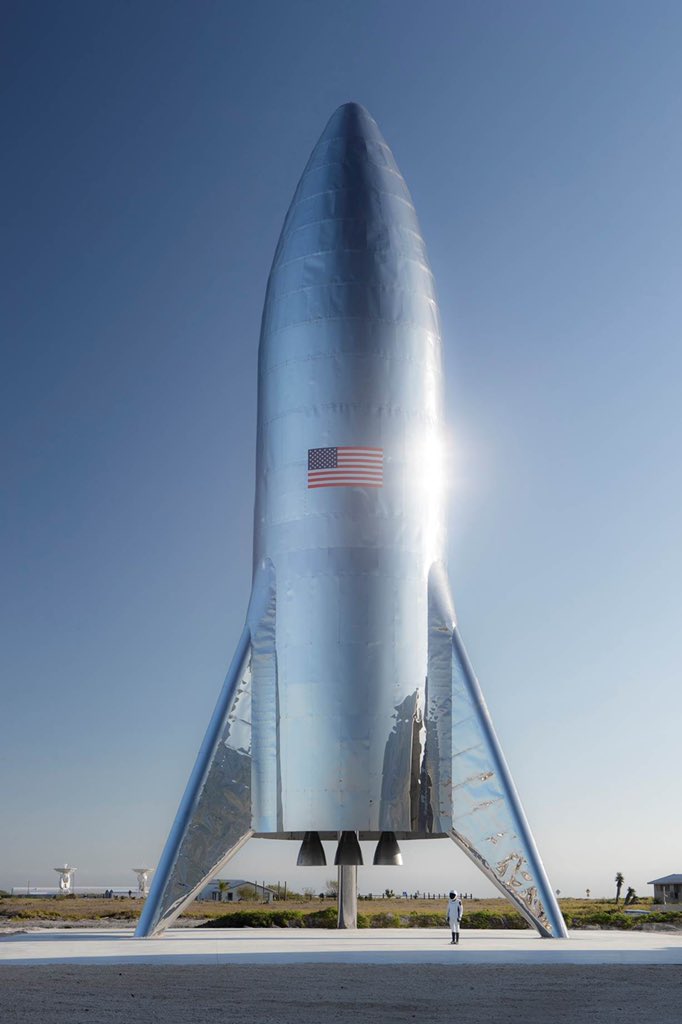
SpaceX CEO Elon Musk says that the company’s first Starship prototype – a low-fidelity hop test vehicle – has finished assembly in South Texas, paving the way towards a series of experimental vertical take-off or landing (VTOL) hop tests that could begin as early as February or March 2019.
Posted by: The Brickmuppet at
12:49 AM
| Comments (1)
| Add Comment
Post contains 688 words, total size 6 kb.
September 18, 2018
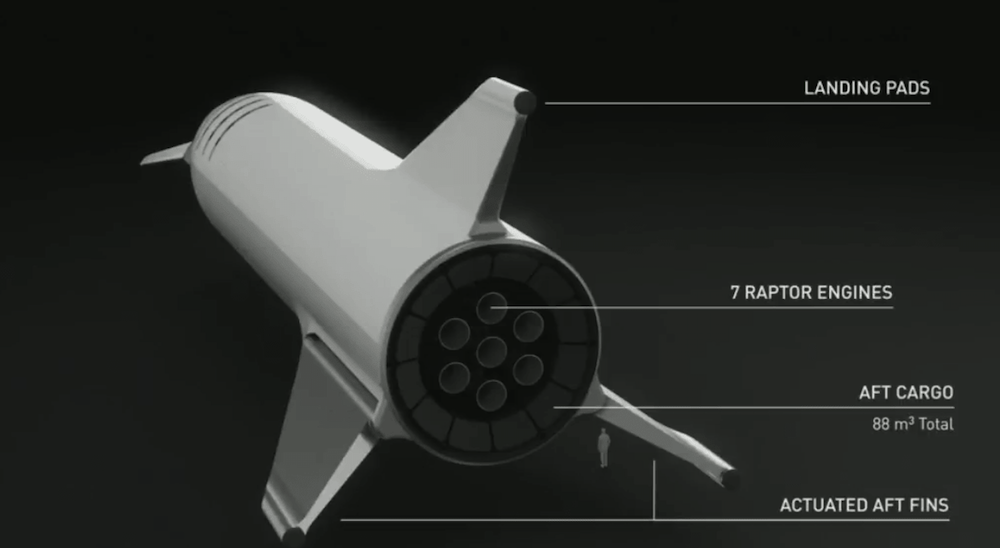
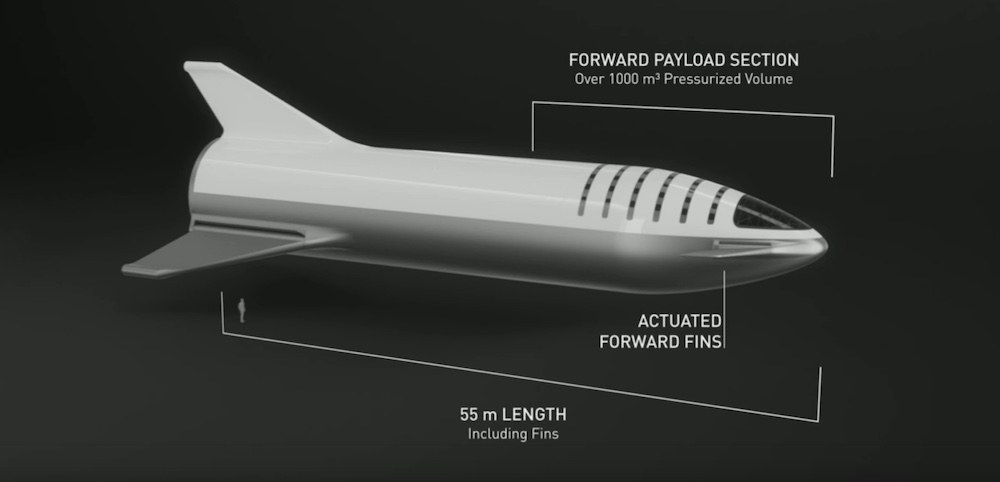

I know it has become fashionable these days to decry space as a place where the rich will flee to escape us clods -- but in fact it is harsh and desolate, a set of environments where recycling isn't just a nice idea but a near-necessity -- and where conditions are such that you're already set up to work with harsh and dangerous processes while being isolated from them. We can extract exotic metals and process radioactives on the Moon all we like and not endanger a single newt or squirrel -- or person, if they do it right -- and the aftermath won't be a spreading contaminated lake in China or a massive disposal problem in the Pacific Northwest.
Posted by: The Brickmuppet at
08:18 PM
| No Comments
| Add Comment
Post contains 785 words, total size 7 kb.
May 31, 2017
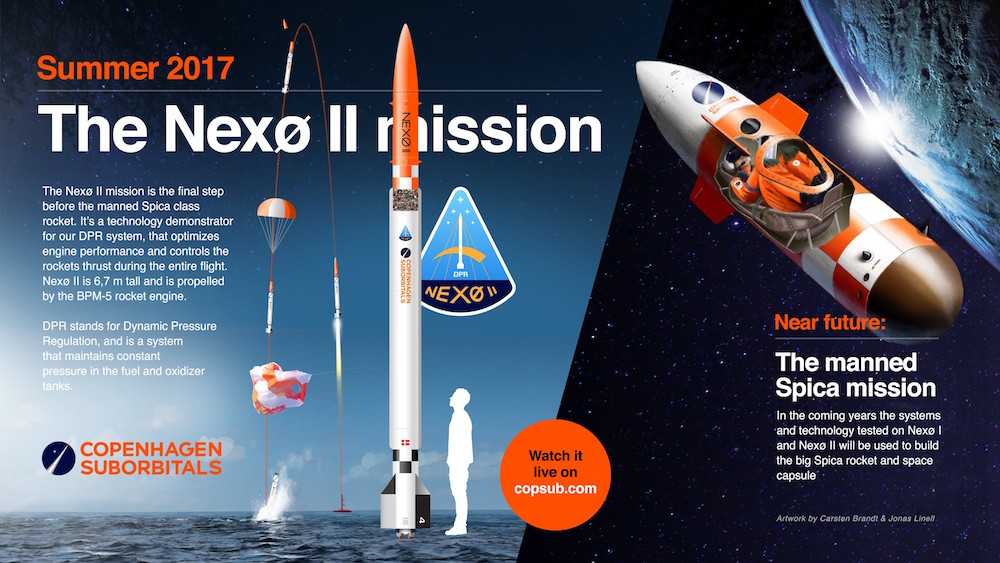
Posted by: The Brickmuppet at
07:06 PM
| Comments (2)
| Add Comment
Post contains 63 words, total size 1 kb.
September 01, 2016
India successfully tests its own scramjet engine in flight on board an Advanced Technology Vehicle rocket.

Posted by: The Brickmuppet at
01:14 PM
| Comments (5)
| Add Comment
Post contains 40 words, total size 1 kb.
December 28, 2015

Posted by: The Brickmuppet at
02:39 PM
| Comments (4)
| Add Comment
Post contains 145 words, total size 2 kb.
81 queries taking 0.1374 seconds, 301 records returned.
Powered by Minx 1.1.6c-pink.










